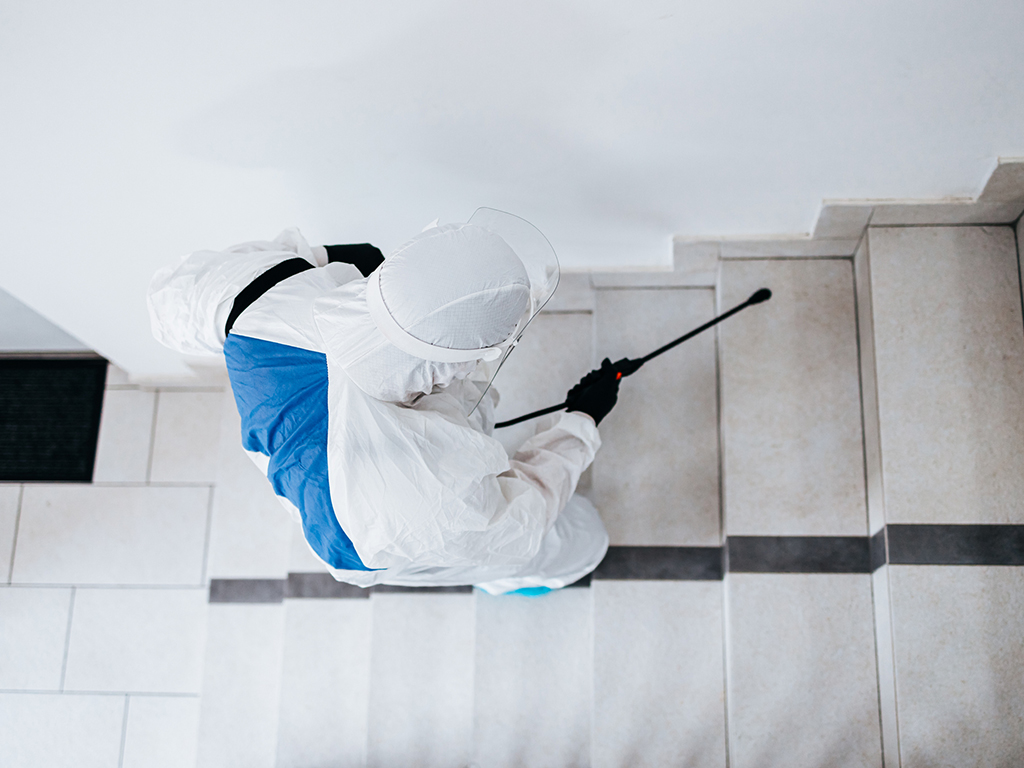COVID-19 has made it apparent that our schools need indoor air quality improvements. School air quality is of particular importance because of how susceptible students are to airborne contaminants compared with adults, and how this susceptibility impacts their long-and-short-term academic, physical, mental, financial, and social well-being. In this 4-part series, we will explain the situation in our schools and what school districts can do about it.
In Part 1, we discussed how poor indoor air quality (IAQ) negatively impacts schools. In Part 2, we discussed how external and financial factors create that poor IAQ while suggesting several solutions. This is Part 3: Policies, Procedures, and Practices. First, we will cover school policies towards pest control, class pets & plants, and equipment & supplies. Then, we will discuss creating an IAQ plan for your school.
Policies, Procedures, & Practices
Current indoor air policies, procedures, plans, and practices are self-evidently insufficient. Why is this self-evident? If our regulations were sufficient, our society wouldn't have been susceptible to an airborne pandemic in the first place.
Changing our indoor air is a society-wide effort. However, there are some changes school districts can make independently.
Pest Control
 Both pests and traditional pest control can negatively impact air quality. (Image Credit: Getty / mladenbalinovac)
Both pests and traditional pest control can negatively impact air quality. (Image Credit: Getty / mladenbalinovac)
Considerations: Pests—such as cockroaches and mice—shed proteins that trigger asthma and allergy symptoms.1,2 However, the traditional solutions to pests—rodenticides and insecticides—can become air quality problems in themselves. Certain insecticides and rodenticides can release volatile organic compounds, and accidental exposure may cause health problems in humans.
Solutions: Replace traditional pest control practices with integrated pest management (IPM). Integrated pest management has 4 components:
- Monitoring: Identifies pest problems and tracks progress.
- Thresholds: Establishes exactly when schools should take action against pests (for instance, a single fly in the office might not require any action, but a single rat in the basement certainly does).
- Prevention: Seeks to avoid the infiltration of pests in the first place by removing sources of food and water, sealing points of entry, and reducing hiding places.
- Control: Uses the “most effective, lowest risk options”3. In other words, IPM doesn't jump right to pesticides when something else will do just as well.
An IPM plan may include sealing crevices by which pests enter the building, only storing food in chew-proof containers, performing routine pest inspections, and training staff in IPM principles. According to the EPA, “IPM creates a safer and healthier learning environment by managing pests and reducing children's exposure to pests and pesticides.”4 Please see these sample IPM plans from the Jefferson, OR Country School District and the Connecticut government website as an additional resource.
Class Pets & Indoor Plants
 The wrong class plant can shed allergens (Image Credit: Getty / petrograd99)
The wrong class plant can shed allergens (Image Credit: Getty / petrograd99)
Considerations: The effect of pets and plants on indoor air quality is self-explanatory. Class pets are more pleasant than pests, but they still can shed allergens. Indoor plants (whether decorative or in the science lab) can also spread pollen.
Solutions: When selecting plants, consider consulting the Ogren Plant Allergy Scale System (OPALS) as recommended by the Asthma and Allergy Foundation of America’s blog. According to the blog, “It is a standard that considers the likelihood that a plant – flowers, grasses, shrubs and trees – will cause pollen allergy symptoms. Each plant is ranked on a 1-10 scale, 10 being the most allergenic.”5
You might think the simplest solution for class pets is to stick with fish, but fish tanks can encourage mold growth. Instead, the organization Pets in the Classroom recommends requiring teachers to obtain administrative approval and investigate student allergies before acquiring any school pet. Also, make it a policy to inform parents of school pets, and give them the option to exclude their children from class pet activities.
Supplies & Equipment
 Your custodial and cafeteria staff (as well as the supplies they use) can be your most important allies in the battle for better indoor air quality. (Image Credit: Getty / LifestyleVisuals)
Your custodial and cafeteria staff (as well as the supplies they use) can be your most important allies in the battle for better indoor air quality. (Image Credit: Getty / LifestyleVisuals)
Considerations: Supplies and equipment affect air quality in 2 ways.
First, what supplies and equipment you purchase for your school district can contribute to air pollution directly. For instance, gas stoves in the cafeteria can spike the levels of nitrous oxides and formaldehyde; there is some evidence to suggest that gas stoves may even cause asthma in children. Of course, some materials—such as cleaning products and art supplies—are going to exude a certain amount of VOCs no matter what; but you can choose to opt for nontoxic and odor-free versions where available.
Secondly, how you use and maintain your supplies is also important to air quality. For instance, without frequent laundering, mold may grow on mopheads. A cleaning product might also be mixed and stored improperly, allowing it to leak VOCs into the air.6
Solutions: The simplest way to solve these concerns is to make sure cleaning, lab, art, and kitchen materials are all maintained, used, and stored according to the manufacturer's instructions and/or state, federal, and local guidance. For instance, use a fume hood for science lab experiments, and tighten the caps on noxious art supplies. Launder mops and cleaning rags daily, and wash and dry out cleaning buckets when they are not in use. Inspect (and repair if needed) furnaces, air conditioners, and other large equipment yearly. Such practices may be time-consuming, but an ounce of air contaminant prevention is worth a pound of air cleaning cures.
However, considering the many hazardous materials used by school districts, you may wish to start with an inventory. According to the EPA, it is advisable to “Create and maintain an inventory of all purchased products. Capture information related to chemical storage, emergency response and first aid procedures as well as emergency contact information.” While this may seem like a daunting project, getting such an inventory in place will make it easier for new and existing staff to maintain indoor air quality daily.
Another way to improve air quality is to replace your materials with an IAQ-friendly version. Don't worry about making a large, upfront investment here. The eBook Unlocking Hidden Value in Class B/C Office Buildings says something interesting about office practices which we also think applies to air quality in schools; “At equipment end-of-life, replace with a more efficient model instead of a like-for-like replacement.”7 In other words, unless the supplies you purchased have been recalled or the equipment is out of code, you can wait until it is exhausted before replacing it with something better. This applies to anything as large as a cafeteria stove to something as small as a bottle of disinfectant. Such a policy is a budget-friendly way to improve indoor air quality.
Instituting an IAQ plan
 Be sure to inform teachers and staff that you are instituting an IAQ improvement plan and solicit their feedback during plan development. (Image Credit: Getty / izusek).
Be sure to inform teachers and staff that you are instituting an IAQ improvement plan and solicit their feedback during plan development. (Image Credit: Getty / izusek).
Most of the current conversation around air quality involves expensive HVAC overhauls. As we shall see in the next article, improving air quality is not that simple, nor are HVAC overhauls always feasible. Improving IAQ means factoring in the whole environment. One way to do this is to formalize and centralize all these policies into a school-wide IAQ plan (sometimes also called an Indoor Environmental Quality Plan). Having such a series of standardized IAQ policies and procedures can provide accountability, increase staff investment, and establish a baseline from which to measure future progress. There are several guides available to help you develop such a plan, but we wish to highlight some important tips.
- Your district will still need stakeholder investment for an IAQ plan. (As school district leaders, you are no doubt quite aware of how many stakeholders are required to make any district-wide plan succeed.) Be sure that all facilities directors, cafeteria staff, environmental staff, and educators are informed of your intention to develop an IAQ plan and are trained in best practices once the plan is formed; (the EPA suggests you consider incorporating IAQ training into regular meetings). You can obtain staff and PTA buy-in by sharing the detrimental effects of poor air quality (see Part 1) and the high ROI to schools (see Part 2). You may also wish to appoint an IAQ coordinator from among existing staff and allocate this person an additional stipend for performing the duties of this role.8 An IAQ coordinator can also be an invaluable resource for monitoring outside engineering firms (who can sometimes improve air quality in one area while making it worse in another, as we shall discuss in Part 4).
- You may wish to hire an outside professional to help you make your evaluations and develop your IAQ plan. Your staff is undoubtedly extraordinary, but they are likely stretched too thin to know where to begin. ActivePure—with a century of experience improving indoor spaces—can come to the rescue. Our air quality experts have helped hundreds of schools improve their air quality. We perform full spectrum air quality analyses, have access to proprietary smart technology, and can help your school district develop a custom plan that matches its resources and goals. Collaborate with us on better indoor air today!
1 Asthma and Allergy Foundation. (2015). “Insect Allergies.” https://www.aafa.org/insect-allergy
2 Center for Disease Control. (2020). “Common Asthma Triggers.” https://www.cdc.gov/asthma/triggers.html
3 Environmental Protection Agency. (2022). “Introduction to Integrated Pest Management.”
https://www.epa.gov/ipm/introduction-integrated-pest-management
4 Ibid.
5 AAFA Community Services. (2018). “Smart Gardening: Tips for an Allergy-Friendly Garden.”
https://community.aafa.org/blog/smart-gardening-tips-for-a-allergy-friendly-gardening
6 Environmental Protection Agency, et al. (2014). "A Guide to Implementing an IAQ Program."
https://www.epa.gov/sites/default/files/2014-11/documents/coordinators_guide.pdf
7 Cathcart, J, et. al. (2020). Unlocking Hidden Value in Class B/C Office Buildings: Best Practices for Pursuing Low Cost, High-Impact Energy Efficiency and Green Leasing Strategies., p.12 Rocky Mountain Institute, Urban Land Institute, and BOMA International.
https://boma.org/classbcenergyefficiency
8 "A Guide to Implementing an IAQ Program," 2014



